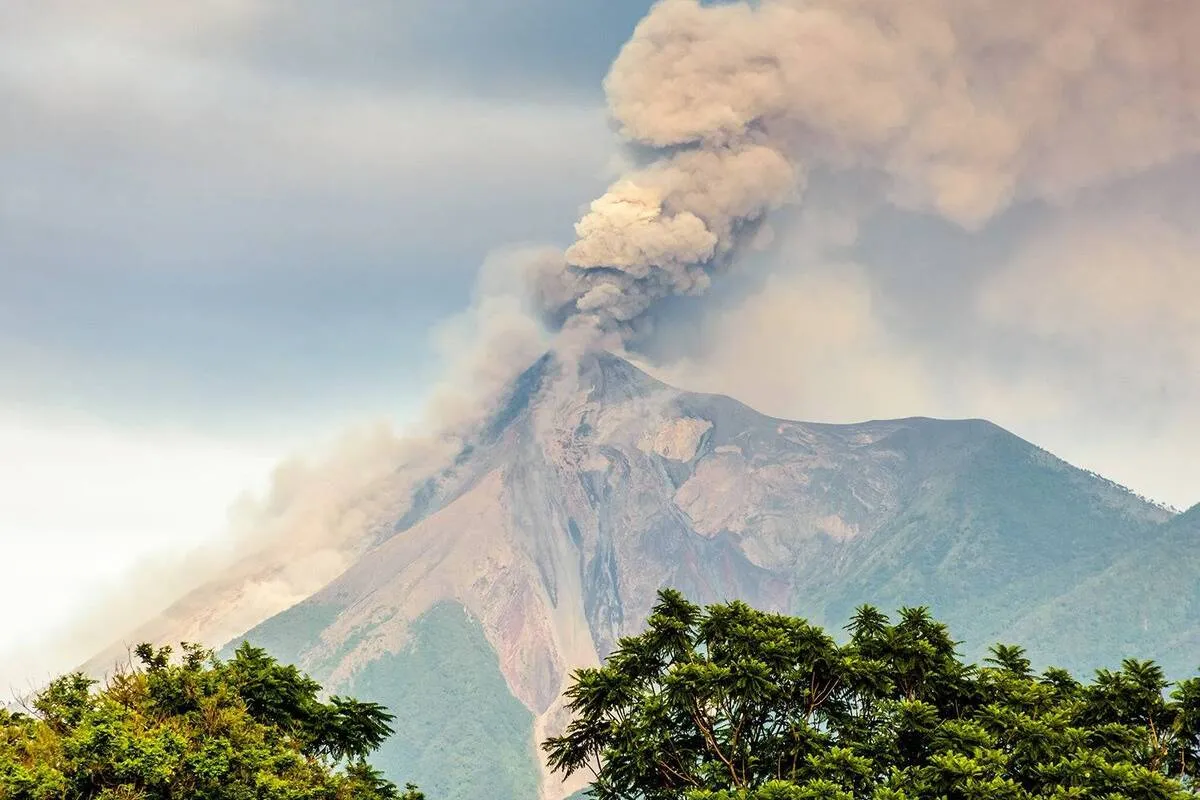New Volcano Warning System Hears Earth Blowing

The signal shifted noticeably before a major eruption at Ontake Volcano, offering a promising early warning tool. A new study led by Professor Mike Kendall from the Department of Earth Sciences has explored a novel monitoring method for providing early warnings of volcanic eruptions. The research team analyzed earthquake signals from two eruptions of Ontake Volcano in Japan, one small and one explosive. They found that the characteristics of shear-wave splitting varied depending on the eruption’s size. Published in the journal Seismica, the study suggests that tracking these signals could serve as an effective early warning system for potentially hazardous volcanic activity.
For communities living near volcanoes, early warning systems are essential for survival, but mistrust in these alerts can lead to tragic outcomes. To reduce the risk of false alarms, scientists must find more dependable methods of monitoring volcanic activity.
In a new study, researchers from the University of Oxford examined a seismic phenomenon called shear-wave splitting as a potential tool for providing early warnings of dangerous eruptions.
When magma and rock move within a volcano, they generate seismic waves, but these signals are often complex and difficult to interpret. The study aimed to identify a reliable parameter that could not only indicate when an eruption is likely to occur but also predict how severe it might be.
Shear-wave splitting is a phenomenon where seismic shear-waves waves travel at different speeds depending on their polarization. Cracks and fractures inside the rock can slow down seismic waves, but have a larger delaying effect on seismic waves that travel across the cracks and fractures. If the cracks are aligned in one direction, then the amount of shear-wave splitting increases.
Magma and fluids moving beneath a volcano exert stresses on the surrounding rocks, causing cracks to open in certain orientations and close in others. Examining changes to shear-wave splitting through time can be really useful for scientists, as it tells them where these cracks are opening and closing. But the research team wanted to take this a step further – and test whether the larger stress changes during an explosive eruption also caused a more significant change to the amount of shear-wave splitting.
“Seismic anisotropy – or the effect of rock composition and internal fractures on the speed of shear-waves oscillating at right angles to each other – is a well-documented phenomenon,” said Professor Mike Kendall (Department of Earth Sciences, University of Oxford). “When we reflected on how anisotropy increases as the pressure inside a volcano builds, we were excited to explore if we could detect these changes, and if this could be a distinctive signal which could be applied to early warning systems.”
The research team put this theory to the test by examining seismic signals during two eruptions of Ontake Volcano, on Honshū Island in Japan. The 2007 eruption was small and had much less of an impact on the surrounding community, whereas the 2014 eruption was larger, more explosive, and sadly more deadly.
They were excited to discover that during the smaller eruption, the amount of shear-wave splitting remained constant throughout, but during the larger eruption the amount of splitting doubled just before Ontake exploded. The team believes that the larger stress change during the 2014 eruption increased the observed shear-wave splitting, indicating a useful relationship between the amount of splitting and the size of the eruption.
Co-author Professor Toshiko Terakawa (Nagoya University) noted: “The focal mechanisms of volcano-tectonic earthquakes changed drastically before and after the 2014 eruption. Integrating data from shear-wave splitting and earthquake focal mechanisms could provide deeper insights into conditions required for an eruption to occur.”
Co-author Professor Martha Savage (Victoria University of Wellington) added: “The records around two eruptions on Ontake volcano in Japan have been able to show that the method can not only show changes before eruptions, but that they can potentially help to predict the size of an eruption. This work was an example of how cooperation among people from around the globe can address important societal problems.”
Because the change in shear-wave splitting occurred before the eruption of Ontake began, scientists monitoring the volcano will be able to use this parameter as both a vital early-warning system and an indicator of how damaging the eruption could be. This offers a new way to protect local communities from the devastating impacts of a volcanic eruption.
“We expect to see these effects at other volcanoes across the globe, not just at Ontake Volcano,” said co-author Dr. Tom Kettlety (Department of Earth Sciences, University of Oxford). “As changes in volcanic stress occur prior to an eruption, we anticipate that we would see changes in shear-wave splitting. This could be a valuable tool for early warning of volcanic eruptions, especially for local communities.”
4155/v





















